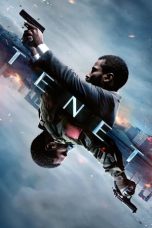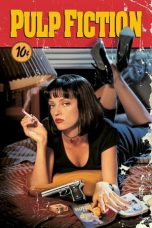- Source: Timeline of Manila
The following is a timeline of the history of the city and metropolitan area of Manila, the capital city of the Philippines.
9th Century onward
c. 900 CE - The Kingdom of Tondo was at its peak and was a center of commerce and trade of the Tagalogs. It was during this era that the King of Tondo issued the Laguna Copperplate Inscription to Namwaran's clan on 21 April 900 CE.: "134" : "38"
c. 1175 - the Polity of Namayan was established by the Tagalog people at the Pasig River. It was led by the house of Lakan Tagkan during its peak in the 1100's.
c. 13th Century - the Kota Seludong or better known as the Kingdom of Maynila was founded by Avirjirkaya which spanned present day Intramuros.
c.1300- Empress Sasaban became the Queen Regent of Namayan. According to oral tradition, she was a concubine of Anka Widyaya of Java and bore a child named Prince Balagtas
1365 - The Battle of Manila (1365). The forces from the Kingdoms of Luzon fought against the Empire of Majapahit from Java in what is now Manila.
Uncertain timestamp - the Tagalog and Kapampangan-fortified city of Cainta was established on an upriver area which occupied the shores on both sides of a waterway of the Pasig River. It was located not far from where the Pasig River meets the Lake of Ba-i.
1450 - Dayang Kalangitan became the Hara (Queen who is a wife of a Rajah) of Tondo. She established her dwelling in the banks of the Bitukang Manok River (present day Parian Creek) in Pasig.
1480 - Rajah Aki Matanda became the Rajah of Manila.
1500 - Salalaia became the Rajah of old Manila.
1521 - Sri Bunao became the Lakandula based in Tondo.
16th Century
May 24, 1570 - The Battle of Manila between Rajah Sulayman and Martin de Goiti. The battle concluded with the city being set on fire.
1571 - 24 June: Spaniards Martín de Goiti, Juan de Salcedo and Miguel López de Legazpi arrived. In August 1571, Legazpi instructed his nephew Juan de Salcedo to "pacify" Cainta. After travelling several days upriver, Salcedo laid siege to the city and eventually found a weak spot on the wall. The final Spanish attack annihilated over 400 residents of Cainta, including their leader Gat Maitan.
1572 - The Spanish city was attacked and was almost seized by Chinese pirates.
1573 - The Spanish galleon trade began.
1574 - A Chinese pirate named Limahong tried to seize Manila.
1579 - The Catholic Diocese of Manila was established.
1583 - Fire.
1584 - The Real Audiencia of Manila of the Viceroyalty of New Spain was established.
1590
The Printing Press was established.
Construction of walls and other defences began.
1603 - Chinese unrest.
1607 - The San Agustin Church was consecrated.
1611 - The University of Santo Tomas was established by Catholic Dominicans.
1615 - The Manila-Acapulco galleon trade began.
1620 - The Colegio de San Juan de Letran was established by Catholic Dominicans.
1645 - 1645 Luzon earthquake.
18th -19th Century
1762 - The British occupation of Manila began.
1764 - The British occupation of Manila ended in honor of the Treaty of Paris; the Spanish regained hold of the city.
1823 - Population: 38,000.
1837 - Port opened to foreign trade.
1848 - The Diario de Manila newspaper started its publication.
1852 - September: Earthquake.
1859
Escuela Municipal de Manila, the precursor of the Ateneo de Manila University was founded.
The Ilustración Filipina magazine started its publication.
1863 - 3 June: Earthquake.
1865 - The Manila Observatory was founded.
1866 - The Canal de la Reina was dug in Binondo.
1870 - 23 March: Fire in Binondo.
1876 - Population: 93,595.
1880 - July: Earthquake.
1881 - Hong Kong-Manila telegraph in operation.
1882
October: Typhoon.
Water supply was inaugurated.
1887
The National Library of the Philippines was founded.
Population: 176,777.
1888 - The Commercial Association of Lumber was established.
1889 - The Tabacalera Flor de la Isabela cigar factory was built in Paco.
1892 - The Dagupan-Manila railway started its operation.
1893
Electrical lighting was installed.
Fire.
1896 - 5 December: 1896 Manila mutiny.
30 December: execution of Dr. Jose Rizal at Bagumbayan.
1898
25 July - 13 August: Battle of Manila (1898); the United States claimed governance.
The Manila Times English-language newspaper started its publication.
1899
4–5 February: Battle of Manila (1899).
Taft Avenue ("Calle Rizal") was laid out.
20th Century onward
1900 - The Instituto de Mujeres and the American Circulating Library was established.
20th century
= 1900s-1940s
=1901
The City of Manila administrative entity was created, composed of Binondo, Ermita, Intramuros, Malate, Pandacan, Quiapo, Santa Cruz, Barrio San Nicolas, San Miguel, San Fernando de Dilao (modern day Paco), Sampaloc and Tondo.
The capital of the Philippines was relocated to Manila from Malolos.
Arsenio Cruz-Herrera became mayor.
The National Museum of the Philippines was established.
The United States military camp, Fort William McKinley was established near the city.
The Philippine Constabulary was established and the general headquarters and military camp bases were located in the capital city.
The Philippine Scouts was established and the general headquarters and military camp bases were located near the capital city.
1902 -
Manila's border was expanded to include Santa Ana de Sapa.
The Manila Grand Opera House opened in Santa Cruz.
1903
Population: 219,928 city; 330,345 metro.
Trozo Fire in Manila (May 1903)
1905
The Manila Elks Club was established.
Félix Roxas became mayor.
1908
The University of the Philippines Manila was founded.
The famous Manila Carnival was held for the first time.
1909 - The Philippine Library was established.
1910
Basketball, volleyball, and boy scouting were started in the Philippines at the Manila YMCA by YMCA Physical Director Elwood Stanley Brown.
The "Great Fire in Manila" transpired in Binondo, the damage was worth over two million pesos.
1911 - De La Salle College, known as De La Salle University was founded.
1912 - The Manila Hotel opened.
1913
The first Far Eastern Championship Games, also called "the first Oriental Olympic Games," were held at the Carnival grounds (later the site of the Rizal Memorial Sports Stadium) in Malate, on the 3rd to the 7th of February, with participants from the US Philippine Islands, China, Japan, the British East Indies (Malaya), Thailand, and British Hong Kong.
The Rizal Monument was erected.
1917 - Justo Lukban became mayor.
1918 - Population: 285,306 city; 469,955 metro.
1919 - The United States Air Service established Camp Nichols near Fort William McKinley, just south of Manila.
1920 - Ramón Fernández became mayor.
1923 - The Peking Council, Tokyo Council and the Manila Council - the first Boy Scouts of America Councils in Asia, were organized. (The 1973 Golden Jubilee Jamboree of the Boy Scouts of the Philippines was dated from this year.)
1924 - Miguel Romuáldez became mayor.
1926 - The Legislative Building was inaugurated in Ermita.
1927 - Tomás Earnshaw became mayor.
1928 - The Institute of Accountancy, which later became the Far Eastern University, was founded in Sampaloc by Nicanor Reyes et al.
1930 - The Legazpi-Urdaneta Monument was erected.
1935
Metropolitan Theater was built.
Valeriano Fugoso became mayor.
Grace Park Airfield began its operation in Caloocan.
The city became the capital of the newly-formed Commonwealth of the Philippines.
The Philippine Commonwealth Army was established and the general headquarters and military camp bases were established in the capital city.
1939 - Population: 623,492.
1941
The City of Greater Manila was formed, which merged the city and municipal governments of Manila, Quezon City, Caloocan, Makati, Mandaluyong, Parañaque, Pasay, and San Juan.
Jorge B. Vargas became mayor.
The Manila City Hall was completed.
The Philippine Commonwealth Army's general headquarters and camp base in the city's capital were disestablished, and was occupied by the Japanese Imperial forces.
1942
The Japanese occupation began.
León G. Guinto, Sr. became mayor.
The general headquarters and military camp bases of the Philippine Commonwealth Army were moved to the provinces.
1945
February: The Manila massacre initiated by the Japanese forces transpired.
3 February - 3 March: The World War II Battle of Manila (1945) ensued; the Japanese forces were defeated.
1 August: The City of Greater Manila was disestablished.
Juan L. Nolasco became mayor.
The General Headquarters and military camp bases of the Philippine Commonwealth Army and the Philippine Constabulary was re-established and reactivated in the city's capital after liberation from the Japanese.
1946 - The city became part of the newly inaugurated Third Republic of the Philippines.
1947 - The Republic Theatre opened.
1948
The capital of the Philippines was relocated from Manila to Quezon City.
Manuel A. Roxas High School was established in Paco.
Manuel de la Fuente became mayor.
Population: 983,906 city; 1,569,148 metro.
The Manila American Cemetery and Memorial was established near the city.
1949 - 18 June: City legislative districts for House of Representatives of the Philippines was expanded from two to four.
= 1950s-1990s
=1952
Arsenio Lacson became mayor.
National Press Club established their headquarters in the city.
1954 - Holy Child Catholic School opened in Tondo.
1959 - The Ramon Magsaysay High School was established in España, Manila.
1960
The Araneta Coliseum opened in Quezon City.
Population: 1,138,611 city; 2,462,288 metro.
1961 - The new terminal of Manila Airport opened.
1962 - Antonio Villegas became mayor.
1966 - The Cultural Center of the Philippines was founded.
1970
Zone One Tondo Organization was established.
Population: 1,330,788 city; 3,966,685 metro.
1971 - Ramon Bagatsing became mayor.
21 August: Plaza Miranda Bombing.
1973 - Some 3000 Boy Scouts camped out and conducted a massive clean-up of Intramuros, from the 9th to the 11th of February.
1974 - Miss Universe 1974 pageant was held.
1975
1 October: Thrilla in Manila.
Metropolitan Manila Commission was created to administer not just the city of Manila but also Caloocan, Mandaluyong, Makati, Malabon, Marikina, Muntinlupa, Navotas, Pasay, Pasig, Las Piñas, Parañaque, Pateros, Quezon City, San Juan, San Pedro, Taguig, and Valenzuela.
The Metro Manila Film Festival was first held.
Population: 1,479,116 city; 4,880,006 metro.
1976
Capital of the Philippines was relocated to Manila from Quezon City.
Philippine International Convention Center was built in Pasay.
Ali Mall, the first shopping mall in the Philippines, opened in Quezon City.
Harrison Plaza opened in Malate, Manila.
1979 - Sampaloc flea market was officially inaugurated.
1980 - Population: 5,924,563 metro.
1981
Sister city relationship was established with San Francisco, USA.
Catholic pope visited the city.
1982 - Metro Manila Commission for Squatters was established.
1983
21 August: Assassination of Benigno Aquino, Jr. at Manila International Airport.
31 August: Funeral procession of Benigno Aquino, Jr. passed by the capital from the Santo Domingo Church en route to Parañaque.
1984
Manila Light Rail Transit System Line 1 began its operation.
Population: 1,728,441 city; 6,720,050 urban agglomeration (estimate).
1985 - SM City North EDSA opened as the 1st SM Supermall.
1986
February: People Power Revolution.
May: Mel Lopez became mayor.
1987
First Coup Attempt
City legislative districts for the House of Representatives expanded to the present six.
1989 - Second Coup Attempt
1987 - January: Mendiola Massacre.
1992 - Alfredo Lim became mayor.
1993 - the Easter Regatta, later called the President's Cup Regatta, was held for the first time in Manila Bay
1994
Museo Pambata opened in Ermita.
20 May: Miss Universe 1994 pageant was held.
Population: 8,594,150 urban agglomeration (estimate).
1995
Metropolitan Manila Development Authority was established.
Catholic pope visited the city.
1996 - Ozone Disco fire
1998 - Lito Atienza became mayor.
1999 - Manila Metro Rail Transit System Line 3 began its operation.
2000
30 December: Rizal Day bombings.
Green Papaya Art Projects was founded.
Population: 1,581,082 city; 9,932,560 metro.
21st century
2001
January 16-20: Second EDSA Revolution.
April 25–May 1: EDSA III protest.
2002 - Bus bombing.
2003
Army mutiny.
Manila Light Rail Transit System Line 2 began its operation.
2006 - May: Mall of Asia opened in Pasay.
2007
June 30: Alfredo Lim was re-elected as mayor.
October 19: explosion in Glorietta
November 29: Coup attempt.
Asian Network of Major Cities 21 met in Manila.
MO_Space art gallery was founded.
2009 - September: Typhoon.
2010
23 August: Manila hostage crisis in Rizal Park.
26 September: School bombing.
Population: 1,652,171 city; 11,855,975 metro.
2012 - August: Flooding.
2013
August: Million People March.
Joseph Estrada became mayor.
2015
January: Catholic pope visited the city.
Population: 1,780,148.
2016
22 May: Concert tragedy.
14 August: Tornado.
2017
30 January: Miss Universe 2016 pageant was held.
June: Gunman Attack in Resorts World Manila.
2018 - May: National Museum of Natural History opened in Ermita.
2019
30 June: Isko Moreno became mayor of Manila.
2022
30 June: Honey Lacuna became mayor of Manila. She is the first female to hold the position.
See also
History of Manila
Metro Manila
List of mayors of Manila
Other names of Manila
List of historical markers in Manila
Greater Manila Area
Mega Manila
Timeline of Philippine history
List of cities by population density
References
Bibliography
External links
Kata Kunci Pencarian:
- Tim nasional sepak bola Indonesia
- Persemakmuran Filipina
- Sejarah Filipina (1946–1965)
- Perjanjian Malaysia
- Perang Dunia II
- BTS
- Pasukan Angkatan Darat Amerika Serikat di Timur Jauh
- Konflik Moro
- Pertempuran Jolo
- Miguel Malvar
- Timeline of Manila
- Manila
- List of timelines
- Timeline of Philippine history
- List of timelines of World War II
- Mayor of Manila
- Timeline of the Ferdinand Marcos presidency
- Manila hostage crisis
- LRT Line 1 (Metro Manila)
- Burnham Plan of Manila
- 1
- 2
The Last Samurai (2003)
Pulp Fiction (1994)
Caddo Lake (2024)
No More Posts Available.
No more pages to load.














